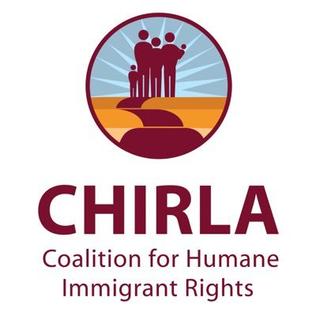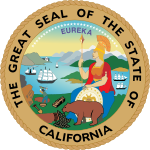Advocacy is an activity by an individual or group that aims to influence decisions within political, economic, and social institutions. Advocacy includes activities and publications to influence public policy, laws and budgets by using facts, their relationships, the media, and messaging to educate government officials and the public. Advocacy can include many activities that a person or organization undertakes, including media campaigns, public speaking, commissioning and publishing research. Lobbying is a form of advocacy where a direct approach is made to legislators on a specific issue or specific piece of legislation. Research has started to address how advocacy groups in the United States and Canada are using social media to facilitate civic engagement and collective action.

The League of Women Voters (LWV) is an American nonprofit, nonpartisan political organization. Founded in 1920, its ongoing major activities include registering voters, providing voter information, and advocating for voting rights. In addition, the LWV works with partners that share its positions and supports a variety of progressive public policy positions, including campaign finance reform, women's rights, health care reform, gun control and LGBT+ rights.

The League of Conservation Voters (LCV) is an American environmental advocacy group. LCV says that it "advocates for sound environmental laws and policies, holds elected officials accountable for their votes and actions, and elects pro-environment candidates." The organization pursues its goals through voter education, voter mobilization, and direct contributions to political candidates. LCV includes 29 state affiliates. LCV was founded in 1970 by environmentalist Marion Edey, with support from David Brower. The group's current president is Gene Karpinski. It is headquartered in Washington, D.C., and has over two million members.

The Consumer Federation of America (CFA) is a non-profit organization founded in 1968 to advance consumer interests through research, education and advocacy.
Generation Progress is a youth-centered research and advocacy group that promotes progressive political and social policy through support for young people, students, and young activists in the United States. Generation Progress is the youth engagement arm of the Center for American Progress.
The Chicago Lawyers' Committee for Civil Rights is a consortium of American law firms in Chicago that provides legal services in civil rights cases

The Coalition for Humane Immigrant Rights, also known as CHIRLA, is a Los Angeles county-based organization focusing on immigrant rights. While the organization did evolve from a local level, it is now recognized at a national level. The Coalition for Humane Immigrant Rights of Los Angeles organizes and serves individuals, institutions and coalitions to build power, transform public opinion, and change policies to achieve full human, civil and labor rights. The Coalition for Humane Immigrant Rights of Los Angeles also has aided in passing new laws and policies to benefit the immigrant community regardless of documented status.
Vote.org, formerly Long Distance Voter, is a nonpartisan 501(c)(3) non-profit organization that is based in the United States. It provides online voter guides for every state, including voter registration forms, absentee ballot applications, and information on deadlines, directions, and ID and residency requirements.
The American Association of People with Disabilities (AAPD) is an American non-profit organization which advocates for the legal rights of people with disabilities, based in Washington, D.C.
Voto Latino is a dual 501(c)(4) and 501(c)(3) nonprofit organization in the United States, founded in 2004. The organization's primary aim is to encourage young Hispanic and Latino voters to register to vote and become more politically involved. The organization was co-founded by Rosario Dawson and Phil Colón. The current president and CEO is María Teresa Kumar.
Action civics is a modern and alternative form of civics education in the United States. Action civics is an applied civic education process in which participants learn about government by examining issues in their own community and then select a focus issue for action through a process of debate, research the issue and learn advocacy strategies, develop civic skills such as public speaking, formulate a plan, mobilize, educate, then evaluate, and reflect on their experience. Participants' voices are encouraged, valued and incorporated. Participants learn by doing, with a focus on collective action. Action civics can encompass a number of different actions from community service to electoral engagement and from talking about concerns with public officials to creating peer education campaigns.
VoteRiders is an American non-partisan, non-profit 501(c)(3) organization whose mission is to ensure that all US citizens over 18 years old are able to exercise their right to vote. Through resources and media exposure, one of its main focuses is assisting citizens who want to secure their voter ID, and it often collaborates with other organizations in these efforts.

The David Bohnett Foundation is a private foundation that gives grants to organizations that focus on its core giving areas – primarily Los Angeles area programs and LGBT rights in the United States, as well as leadership initiatives and voter education, gun violence prevention, and animal language research. It was founded by David Bohnett in 1999. As of 2022, the foundation has donated $125 million to nonprofit organizations and initiatives.

The League of Women Voters of Florida (LWVFL) is a civic organization in the state of Florida. The organization is nonpartisan; the League's Bylaws mandate that the organization will not support any political candidate or party. League promotes political responsibility through informed and active participation of citizens in government, acts on selected governmental issues, and influences public policy through education and advocacy. League's members do advocate on policy issues.
Black Women Organized for Political Action (BWOPA) was founded in 1968 in California after branching off from the Bay Area Women for Dellums, a group of 12 politically active women who were involved in fundraising for Ron Dellums run for congressional office. It is now a 501 c4 nonprofit advocacy organization. Their mission is to encourage African American women to be more involved in politics so that action can be taken to address their oppressions. The goal of the organization is to focus on the intersectionality of issues pertaining to race and gender by encouraging African American women to become involved in the political process. Dezie Woods-Jones was elected the first president of the organization in 1970. Woods dedicated her life to addressing issues concerning education, poverty, female empowerment, and disenchantment. BWOPA focuses on addressing its three branches: operations, political advocacy, and education.

Women Creating Change is a nonprofit organization founded in 1915 by suffragettes in New York City. WCC is still active in the New York community.
The Hispanic Federation (HF) is a U.S based non-governmental organization focused on supporting Hispanic communities through local, state, and national advocacy. The Federation was founded in New York City in 1990 by a small group of Latino leaders, establishing initiatives to advocate for the interests of the Hispanic community and has expanded to establish programs, and policies in 16 states. The organization's objective is to empower and advance the Hispanic community primarily through service pillars, membership services, advocacy, and community programs. The Federation has formed relationships with a network of 100 Latino grassroots nonprofits, as well as collaborating with organizations, government officials, and private sector partners to enact systemic change related to a variety of socioeconomic issues for Hispanic communities. The Federation has gained national recognition for its work in areas of education, health, immigration, economic empowerment, civic engagement, environment, and organizational development to strengthening Latino institutions to ultimately increase the quality of life within Hispanic communities.

Emgage is a family of organizations that seeks to empower Muslim Americans through political literacy and civic engagement. Its national headquarters is in Washington, D.C., and has state chapters in Michigan, Texas, Florida, Virginia, Pennsylvania, and New York. It consists of Emgage, a civic engagement organization, Emgage Action, an issue advocacy organization, and Emgage PAC, the largest Muslim American political action committee (PAC).

Vote Early Day is a movement by a coalition of nonprofits and businesses which encourages voters to use early ballots and designates October 24 as the official “Vote Early Day”. MTV and over 65 partners introduced “Vote Early Day” with the goal to become a new U.S. national civic holiday. Vote Early Day is meant to encourage eligible United States citizens to vote early. The effort also intends to assist people, particularly young voters, to stay informed on what their state's laws are related to early voting.

The League of Women Voters of Alabama (LWVAL) is a nonpartisan civic and political organization in the state of Alabama. The mission of LWAL is to encourage informed and active participation in government, and to influence public policy through education and advocacy. Like other state arms of the league, it is affiliated to the national League of Women Voters.












